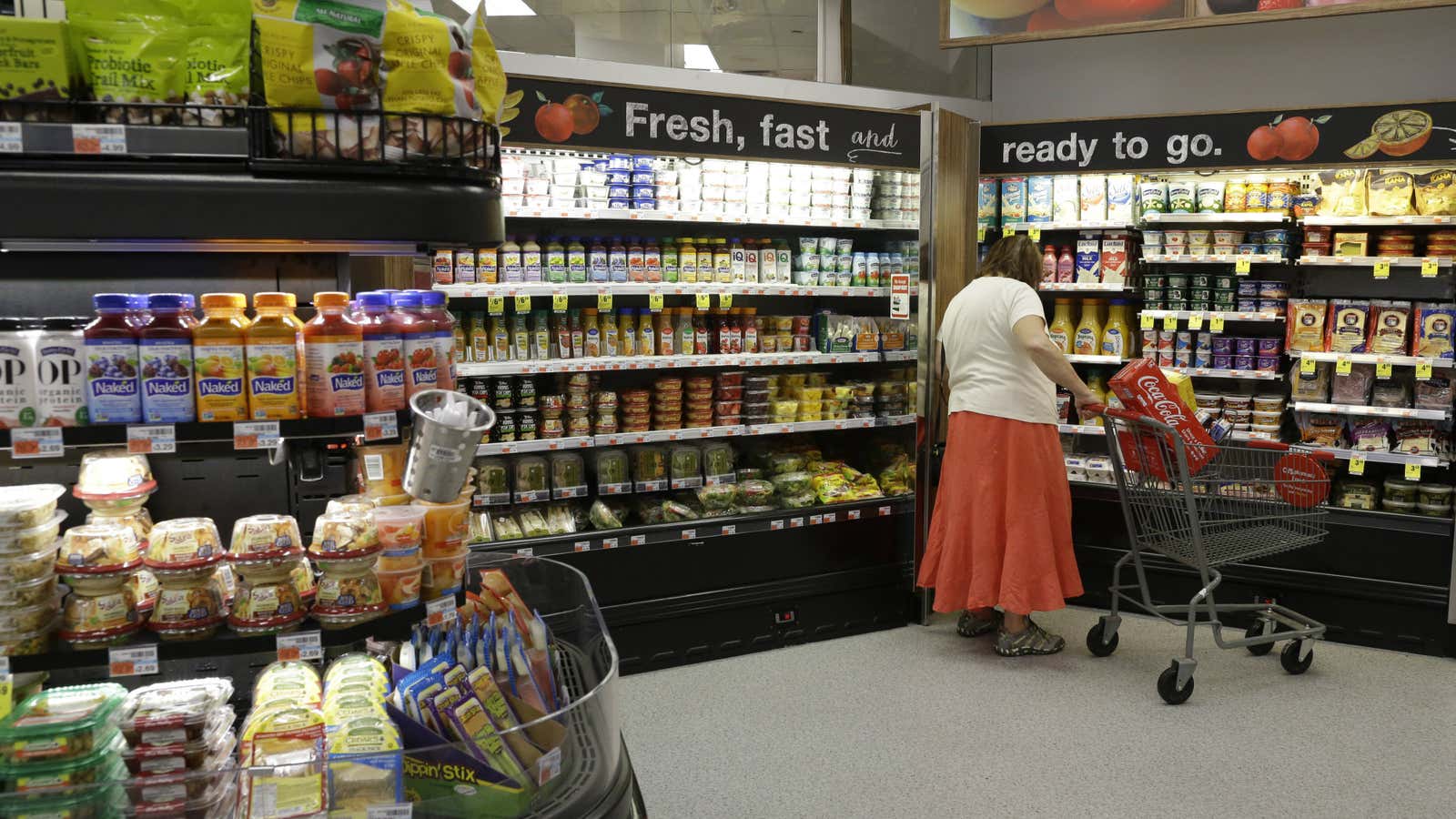A new analysis by the Associated Press finds that food retailers are not opening many new stores in underserved areas. “Major grocers,” the AP finds, “overwhelmingly avoid America’s food deserts instead of trying to turn a profit in high-poverty areas.”
This doesn’t speak well of the supermarket industry’s efforts to help convert the nation’s nutritional wastelands into bastions of healthier eating.
But putting the focus on retailers misses the bigger picture: Supermarket access is just one piece of why low-income Americans tend to eat less healthy diets than higher-income Americans.
Income matters more than access
In September, economists at the USDA published a paper examining the relationship between food access and food choices. They studied poor neighborhoods more than a mile from the closest supermarket, and found that living in one of these “low-income, low-access” (“LILA”) areas had a limited impact on food purchases—”a difference too small to explain much of the national disparities in diet quality and obesity.” LILA consumers, for example, bought only 4.5% less fruit and 2.7% fewer vegetables than their non-LILA counterparts.
Using shopping data from the 2010 Nielsen Homescan Panel Survey and the TDLinx retail database, demographic data from the US Census Bureau, and food access information from the USDA Economic Research Service Food Access Research Atlas, the researchers found that income ultimately mattered much more than access.
Even with the same options in front of them, low income shoppers just make different choices. “Poor people buy different things even if they go to the same store,” Ilya Rahkovsky, an author of the USDA paper, tells Quartz.
Informal food education matters, too
There are many reasons why low income shoppers have different buying habits—and the USDA study suggests that price has little to do with it. (The study found that price differences from one neighborhood to another were too small to blame.)
Education and income are much more important, as Rahkovsky, with researchers from Princeton University and The Wharton School at the University of Pennsylvania, noted in a working paper published in April. (In that study, the researchers found that when new stores opened in low-income areas, the nutritional quality of the purchases made by households with low income and education levels didn’t change. A 2014 study published in Health Affairs had similar findings.)
“You can’t just throw fruits and vegetables into a neighborhood and expect that people will be able to buy them,” explains Danielle Nierenberg, president of Food Tank, an advocacy group for sustainable food. She points to a number of other factors in addition to access, including scant time in households with parents working multiple jobs. If nobody is cooking, the next generation is both missing out on eating healthy food and the opportunity to learn how to cook it. Also, other resources besides food are often scarce in low income neighborhoods—like pots and pans and working stoves.
Convenience stores can play a role
Changes in consumer shopping habits also may have a role to play in how the food industry addresses the problem of food deserts. The AP’s analysis specifically leaves out the impact of dollar stores, and of convenience-store chains like 7-Eleven. But 77% of convenience stores now sell some fresh food, according to the National Association of Convenience Stores.
Ready Pac Foods, for example, sells packaged fresh salads at stores like WaWa, Walgreens, and CVS. Some drugstores and convenience-store chains are investing more in open-air refrigeration and other equipment that allows them to merchandise these foods more attractively, Todd Root, director of sales at Ready Pac, tells Quartz.
But stocking healthy options is one thing. Getting more low-income consumers to reach for them is another.
